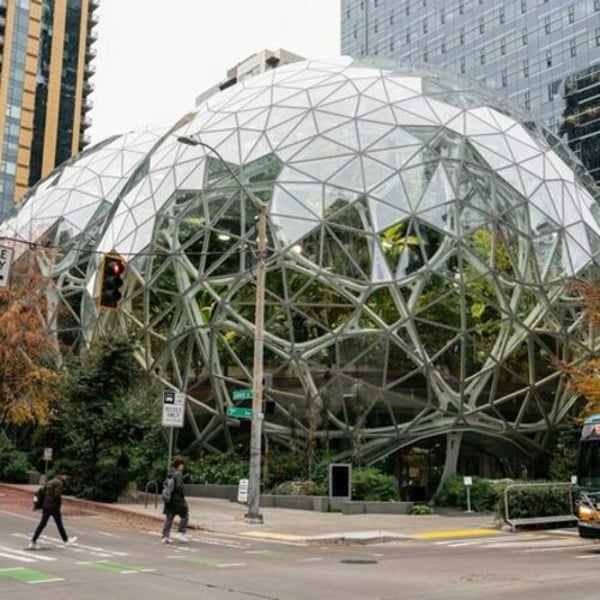Fashion
Amazon’s layoffs show how AI is coming for India

By
Bloomberg
Published
November 2, 2025
Amazon.com Inc.’s latest global layoffs should come as a singular warning to India. For policymakers dealing with the world’s largest youth population, AI suddenly poses a very real risk to jobs, wages, and a white-collar future.
The e-commerce and cloud services giant’s elimination of 14,000 corporate positions worldwide may not have a large direct impact on its sizeable Indian workforce. The more worrying thing is the kind of occupations at risk: Generative artificial intelligence is starting to affect more than just entry-level computer programming.
Outsourcing hubs like Bengaluru and Hyderabad are already feeling the pinch from AI. But Amazon’s cuts may affect finance, marketing, human resources and tech employees, according to local media reports. That puts many more sectors on notice and validates a growing body of academic work.
After parsing nearly 200 years of data on labor markets and technological change, finance scholars at Northwestern University and the Massachusetts Institute of Technology have concluded that advances in natural-language processing may favor occupations that are lower-educated, lower-paid, and more male-dominated, such as construction and trucking.
It would be a dramatic departure from how previous innovation affected demand for workers. As Huben Liu and his coauthors explain, until the 1980s IT revolution, most advances in automation supplanted manual effort while supporting cognitive tasks. Take, for instance, Irving Colburn’s early-20th-century invention of a machine to substitute hand-blown glass in window panes. The blowers’ wages fell 40%. Within one generation, mechanization drove an entire class of artisans out of business.
By contrast, the arrival of electronic calculators in the 1970s helped accountants and auditors to become more productive. It didn’t replace them. The tilt toward services such as finance and health care favored women, facilitating their entry into the workforce as 20th-century innovations also eased the burden of domestic chores.
Over time, these improvements went global, but the hard-won gains may now reverse. With the capital costs of implementing AI expected to become cheaper each year, cognitive tasks that don’t require at least five years of specific vocational preparation will be at risk from automation, the researchers say. That includes many entry-level jobs, such as analyzing financial statements at Wall Street firms.
Mechanized production of sheet glass did little to hurt women. At the cusp of automation in 1900, they held few of the 53,000 jobs in the US glass industry. Employers preferred men. (In 1900, the industry employed twice as many children under 16 as women.) But to lose out now to Lilli, McKinsey & Co.’s proprietary AI tool that’s drafting client proposals and preparing slide decks? That would certainly rankle, especially since it’s named after the first woman professional hired by the consulting firm in 1945.
All this may come as a particularly harsh blow to the 375 million Indians who are between 10 and 24 years old. At 18.5%, youth unemployment in cities is alarmingly high. Young women’s participation in the labor force is abysmally low at under 22%. Large-scale adoption of AI tools by companies will further muddy the picture. In a separate paper, London School of Economics professor Luis Garicano and his coauthor examine a realistic scenario: If AI does away with entry-level grunt work, which employer will bother to train fresh graduates? How will they rise up the career ladder to higher-wage positions?
Artificial intelligence may still surprise us by creating new tasks that don’t yet exist. It’s also possible that young people will invest in their own AI training. But if Amazon is any indication, the technological exposure of higher-educated, better-paid, and more women-oriented occupations is indeed high.
This won’t be the first shock to India’s labor market in modern times. Its cotton spinners and weavers, among the world’s best in the early 18th century, took a large hit from the Industrial Revolution. As the economy struggles to move from lower-middle to higher-middle income, AI is threatening its biggest advantage: the youth bulge it enjoys against other countries that are rapidly aging.
The right approach to AI would contain both carrots and sticks. The preponderance of Chinese large language models among the world’s top 20, as highlighted by my colleague Catherine Thorbecke, makes it obvious that India isn’t doing enough fundamental research. This must change. The government also needs to read the riot act to outsourcing firms. They have to halt share buybacks and invest in meaningful AI projects, not just data centers.
Finally, the broader corporate sector should be given generous tax breaks for research and development. Instead of coming up with generic copies of drugs going off patent in the West, pharmaceutical companies must be encouraged to use AI to discover new molecules.
The next quarter-century offers the most-populous nation a chance to get rich before it grows old. Ending up on the wrong side of technological change for the second time in 300 years won’t be a good outcome — either for India, or the world. Amazon’s job cuts are the proverbial canary in the coal mine. The time to act is now, before the outlook for white-collar work turns more toxic.
Fashion
CFDA to implement fur ban at NYFW from September 2026
Fashion
ECB keeps interest rates unchanged, upgrades growth outlook

According to updated Eurosystem staff projections, headline inflation is expected to average 2.1 per cent in 2025, easing to 1.9 per cent in 2026 and 1.8 per cent in 2027, before returning to 2.0 per cent in 2028. Inflation excluding energy and food is forecast at 2.4 per cent in 2025, gradually declining to 2.0 per cent by 2028. Inflation for 2026 has been revised upward, mainly due to expectations that services inflation will fall more slowly than previously anticipated, the Governing Council of the ECB said in a press release.
European Central Bank has kept its key interest rates unchanged, maintaining confidence that inflation will stabilise at the 2 per cent target.
Updated projections show inflation easing gradually over the coming years, with a slight upward revision for 2026 due to persistent services prices.
Economic growth forecasts have been revised higher, supported by stronger domestic demand.
The ECB also revised its economic growth outlook higher compared with its September projections. Growth is now expected to reach 1.4 per cent in 2025, 1.2 per cent in 2026 and 1.4 per cent in 2027, with expansion projected to remain at 1.4 per cent in 2028. The improvement is driven largely by stronger domestic demand across the euro area.
The Council reiterated its commitment to ensuring that inflation stabilises sustainably at the 2 per cent target. It emphasised that future monetary policy decisions will remain data-dependent and assessed on a meeting-by-meeting basis, without pre-committing to any specific interest rate path.
Fibre2Fashion News Desk (KD)
Fashion
US brand Vera Bradley posts net revenue of $62.3 million in Q3

Vera Bradley reported Q3 net revenues of $62.3 million, down from $70.5 million year over year.
Direct revenues fell 5.3 per cent, with comparable sales down 5.8 per cent, while indirect revenues dropped 30.2 per cent.
Gross margin declined to 42.1 per cent, impacted by inventory write-downs and higher duties, despite early progress from its Project Sunshine transformation.
Source link
-

 Business6 days ago
Business6 days agoHitting The ‘High Notes’ In Ties: Nepal Set To Lift Ban On Indian Bills Above ₹100
-

 Politics1 week ago
Politics1 week agoTrump launches gold card programme for expedited visas with a $1m price tag
-

 Business1 week ago
Business1 week agoRivian turns to AI, autonomy to woo investors as EV sales stall
-

 Sports1 week ago
Sports1 week agoPolice detain Michigan head football coach Sherrone Moore after firing, salacious details emerge: report
-

 Fashion1 week ago
Fashion1 week agoTommy Hilfiger appoints Sergio Pérez as global menswear ambassador
-

 Business1 week ago
Business1 week agoCoca-Cola taps COO Henrique Braun to replace James Quincey as CEO in 2026
-

 Sports1 week ago
Sports1 week agoU.S. House passes bill to combat stadium drones
-

 Tech1 week ago
Tech1 week agoGoogle DeepMind partners with UK government to deliver AI | Computer Weekly



















